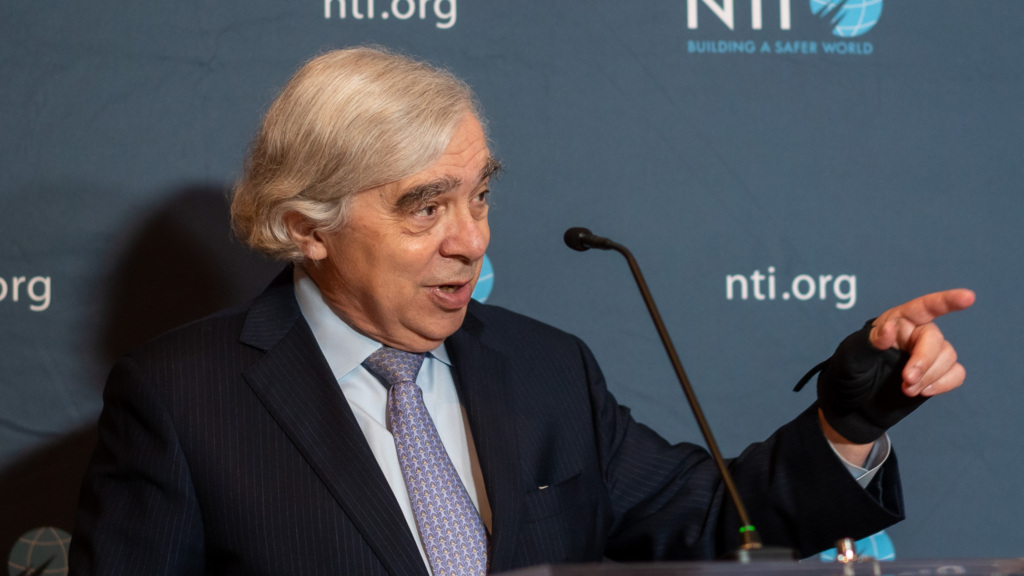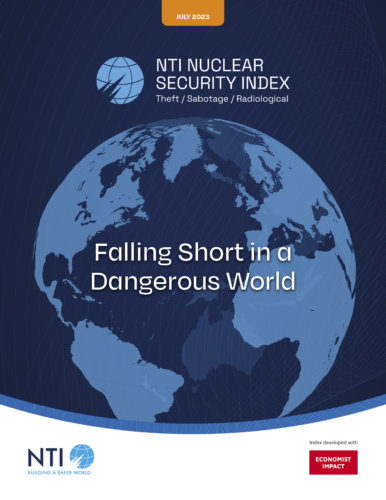
Two years after the onset and rapid spread of a global pandemic that taught the world a powerful lesson about the need for prevention, preparation, and accountability, Russia’s army willfully endangered nuclear power plants in Ukraine, putting the entire region at risk of a devastating radiological release. The shocking developments at Chornobyl and Zaporizhzhia, followed by dramatic events in Russia that raised alarms about the government’s control of itsnuclear arsenal, underscore the urgent need to protect nuclear facilities and materials around the world. Today, the threats to nuclear security are escalating—from theft and sabotage to powerful storms fueled by climate change and, as made painfully clear over the past year and a half, to political instability and war.
At a time of dramatic deterioration in global stability and order with political and social unrest paving the way for new forms of violent extremism, the world now likely faces a growing risk that malicious actors could obtain the materials necessary to fashion a nuclear weapon or a dirty bomb. And all of this is occurring while overall stockpiles of weapons-usable nuclear materials are increasing at an alarming rate.
For the first time since the Nuclear Threat Initiative (NTI) began working with Economist Impact more than a decade ago to collect data from 175 countries and Taiwan for the NTI Nuclear Security Index, nuclear security is regressing in countries and areas with the greatest responsibility for preventing nuclear theft or sabotage—those with weapons-usable nuclear materials and nuclear facilities.
Nuclear security is regressing in countries and areas with the greatest responsibility for preventing nuclear theft or sabotage—those with weapons-usable nuclear materials and nuclear facilities.
This troubling trend of countries and areas neglecting their responsibility to uphold global nuclear security is also playing out across the nuclear non-proliferation regime as disarmament efforts among countries with nuclear weapons have come to a halt and some states are working to modernize and expand their arsenals. Against today’s volatile backdrop—Russia’s aggression, Iran’s nuclear ambitions, North Korea’s provocations, cyber threats to nuclear systems, and more—even some countries without weapons-usable nuclear materials are openly debating developing their own arsenals.
This diminishing commitment to reducing nuclear risks is deeply disturbing. Indeed, it is unraveling hard-fought progress on nuclear security dating back to the end of the Cold War when the United States and Russia worked together to remove and secure weapons-usable nuclear materials left in former Soviet territory. Risk-reduction work increased through biennial Nuclear Security Summits from 2010 to 2016 that brought renewed attention to nuclear dangers and secured commitments from scores of countries to eliminate and better secure their nuclear materials and take steps to prevent their countries from becoming safe havens, staging grounds, or transit routes for illicit nuclear activities. In recent years, this important work has stalled. Now, we see nuclear security regressing for the first time.
The 2023 NTI Index finds a host of troubling developments. Among them, countries and areas with weapons-usable nuclear materials and nuclear facilities have made almost no progress since 2020 toward improving security culture and insider threat prevention; stocks of weapons-usable plutonium at civilian nuclear facilities have grown rapidly; 34% of countries and areas with nuclear facilities have no regulatory requirements in place for protecting nuclear infrastructure during a natural or human-caused disaster; in those same countries and areas, support for political and legal commitments to improve security is faltering; support for the role of the International Atomic Energy Agency (IAEA)—the world’s leading agency with a mission to prevent nuclear proliferation and strengthen the global framework for nuclear safety and security—is inconsistent; and minimal progress has been made on securing radioactive sources against those who might steal them to build radioactive dirty bombs.
These findings are extremely disappointing. In any country or area, inattention to nuclear risks or uneven adherence to processes and regulations imperils our security. A single act of nuclear terrorism would have devastating political, humanitarian, and economic consequences that would reverberate around the world. It would also undermine civil nuclear energy and the important role it plays in mitigating climate change.
Not all the news is bad. Although stockpiles of civil plutonium are on the rise, the 2023 NTI Index’s findings suggest that global norms against civilian use of highly enriched uranium—which can also be used to make nuclear weapons—are solidifying as inventories gradually decline. The data also reveal an increase in the number of countries that are fulfilling key legal obligations to effectively protect nuclear materials and facilities.
It also is heartening that the NTI Index shows that progress is possible over time. Present challenges notwithstanding, countries have made significant progress since the first NTI Index, released in 2012, tracked and reported on nuclear security conditions worldwide. Even last year saw a significant achievement when more than 100 countries participated in the first-ever review of the only international treaty that legally obligates countries to implement security measures for civilian nuclear materials. Countries that signed up to that treaty—the amended Convention on the Physical Protection of Nuclear Material—emerged from the review having reached consensus on a path forward and expressing a clear desire to drive progress.
Present challenges notwithstanding, countries have made significant progress since the first NTI Index.
This is not the first time the world has faced great risks. Governments, international institutions, industry, and civil society, with the support of visionary leaders, have risen to meet moments of great peril in the past. In this new era of instability, it is crucial that the global nuclear security architecture be fortified to prevent nuclear catastrophe. Leaders have an obligation to rise to this challenge. It is time for them to step up to the task.

